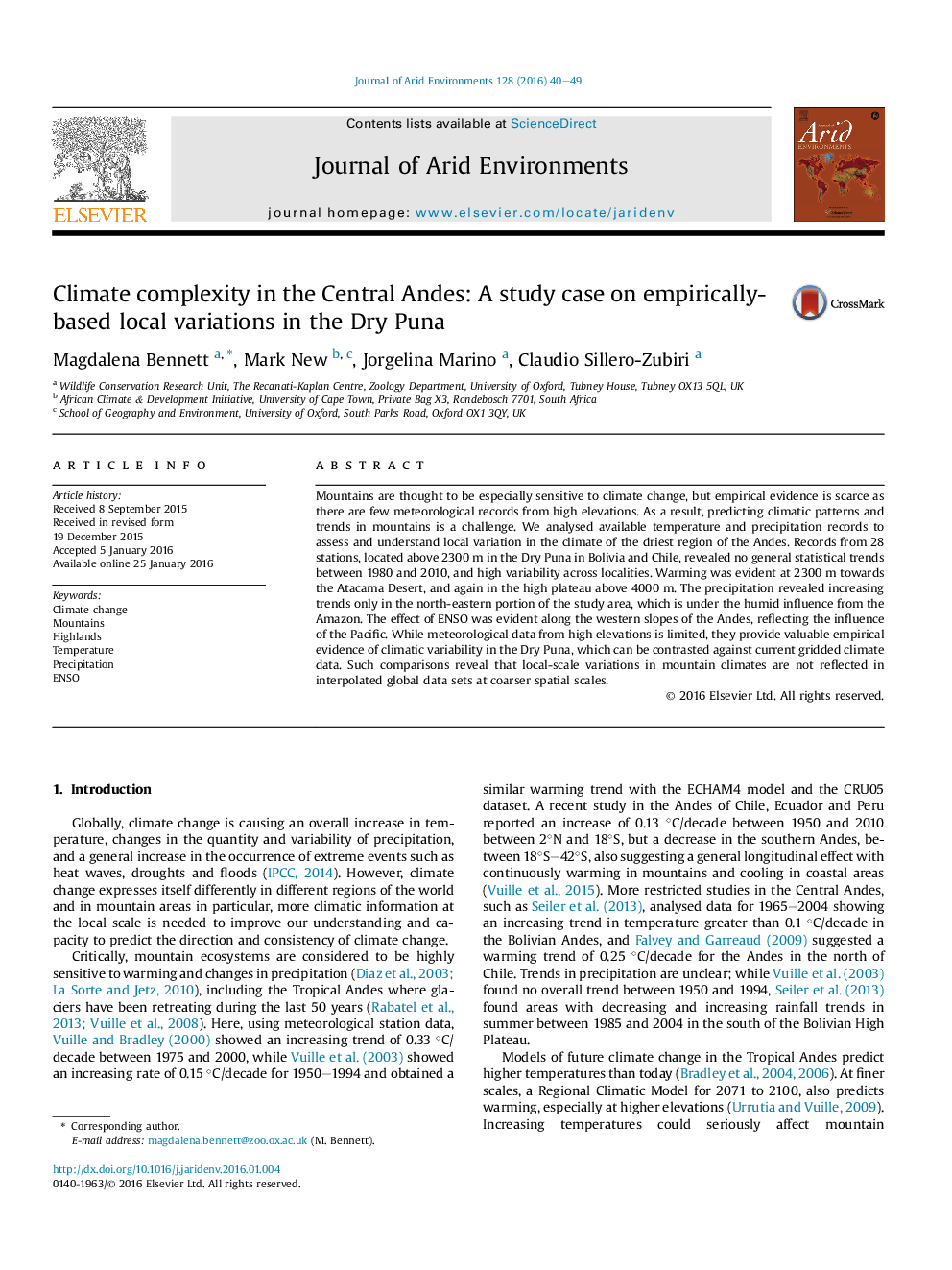| Article ID | Journal | Published Year | Pages | File Type |
|---|---|---|---|---|
| 4392773 | Journal of Arid Environments | 2016 | 10 Pages |
•We measure trends in precipitation and temperature in Central Andes Dry Puna in Bolivia and Chile.•We find no consistent trends and high variability across weather stations.•Warming was evident towards the Atacama Desert and in the High Plateau.•Results support a strong effect of ENSO in temperature and summer rainfall in the Dry Puna.•The Dry Puna climate is not well reproduced in global climate datasets.
Mountains are thought to be especially sensitive to climate change, but empirical evidence is scarce as there are few meteorological records from high elevations. As a result, predicting climatic patterns and trends in mountains is a challenge. We analysed available temperature and precipitation records to assess and understand local variation in the climate of the driest region of the Andes. Records from 28 stations, located above 2300 m in the Dry Puna in Bolivia and Chile, revealed no general statistical trends between 1980 and 2010, and high variability across localities. Warming was evident at 2300 m towards the Atacama Desert, and again in the high plateau above 4000 m. The precipitation revealed increasing trends only in the north-eastern portion of the study area, which is under the humid influence from the Amazon. The effect of ENSO was evident along the western slopes of the Andes, reflecting the influence of the Pacific. While meteorological data from high elevations is limited, they provide valuable empirical evidence of climatic variability in the Dry Puna, which can be contrasted against current gridded climate data. Such comparisons reveal that local-scale variations in mountain climates are not reflected in interpolated global data sets at coarser spatial scales.
